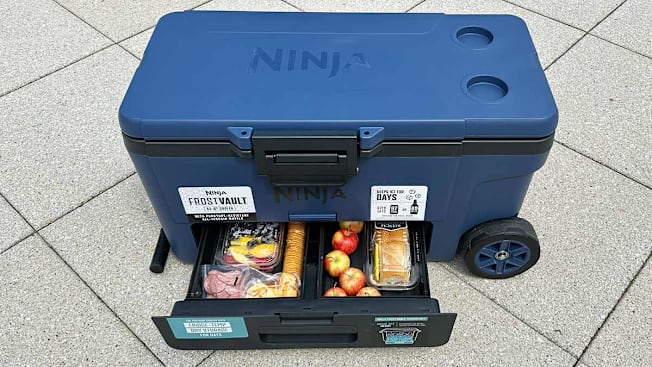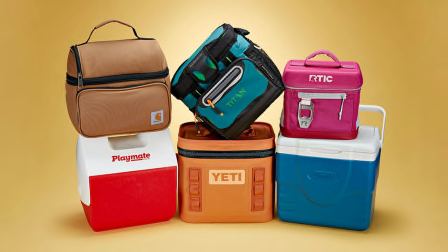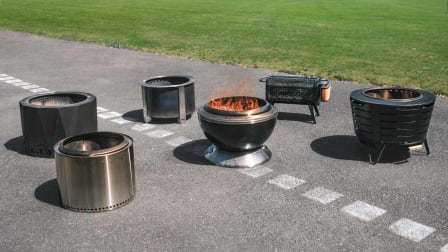We Tried It: Ninja's Largest FrostVault Wheeled Cooler With Dry Zone
Drawers that Ninja claims will keep food cold and dry, plus all-terrain wheels, are two of the unique features of this 65-quart cooler
When you shop through retailer links on our site, we may earn affiliate commissions. 100% of the fees we collect are used to support our nonprofit mission. Learn more.

Ninja is known for making some pretty innovative kitchen appliances that CR has tested—the Luxe Café espresso machine and coffee maker, the Sizzle indoor grill, and the Woodfire Grill, to name a few—and their everyday products, including blenders, coffee makers, air fryers, and ice cream makers, tend to perform well. When we heard the brand released the FrostVault line of coolers, we knew we had to test the largest model in our labs.
- Ninja FrostVault Wheeled Cooler: Product Specs How We Tested How It Performed Should You Buy It?
Product Specs
Dimensions: 36.61 x 17.36 x 18.89 inches (LxWxH)
Price: $350
Weight (empty): 40.5 pounds
Warranty: 5-year limited
Notable features: All-terrain wheels, locking lid and drawer, handle for easy moving, and 97-can capacity (with no ice)
Ninja FrostVault 65-qt Wheeled Cooler with Dry Zone
How We Tested the Ninja Cooler
Amézquita tested three claims from Ninja in CR’s labs:
• Maintains ice and temperature below 40° F for up to six days.
• Maintains the temperature of the dry storage drawer—the Dry Zone—below 40° F for up to two and a half days.
• Cold transfers into the drawer to keep food cool, dry, and separate at food-safe temps.
We conducted two tests of the Ninja’s cooling capabilities: at room temperature (between 68° F and 72° F) and in a temperature-controlled chamber set to remain between 85° F and 90° F. The night before we began each test, we prechilled the cooler with 35 pounds of ice (as Ninja recommends in its cooler user manual). We also added 37 12-ounce cans to the cooler’s ice box.
The next morning, any ice that had melted overnight was drained, and 15 pounds of ice was added to the cooler. We added some apples, a sandwich, a container of cut fruit, crackers, cheese, and ham to the drawer compartments to monitor the buildup of condensation in the packaged food. The temperature inside the cooler and in both compartments of the drawer at the bottom (Ninja calls it the Dry Zone) were monitored from the start of the prechilling process to the end of our testing, seven days later. The temperature on the surface of the cooler was also monitored. Though it doesn’t reflect how people use coolers in real life (think about the constant opening to retrieve drinks throughout the day), the cooler was minimally opened throughout the testing to minimize the possibility of its opening affecting the product’s performance.





























